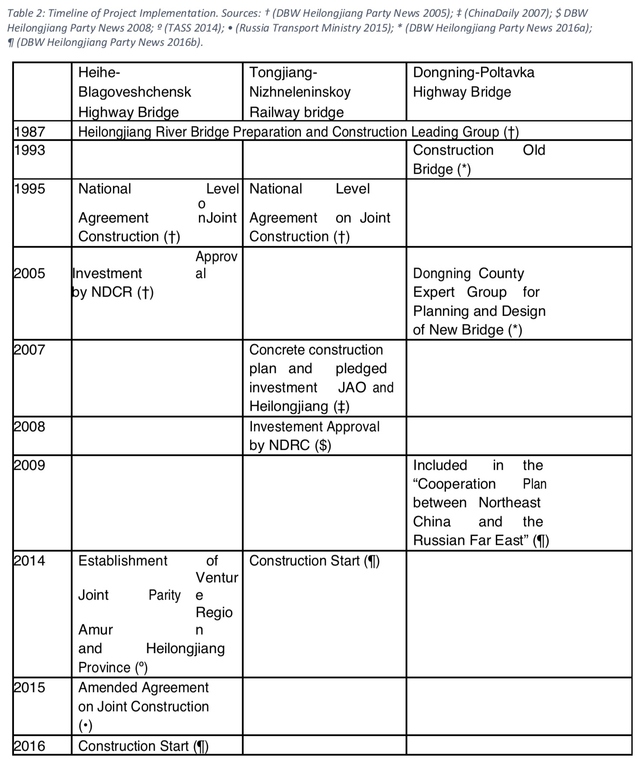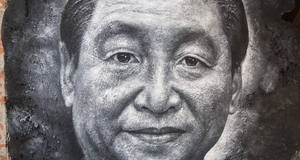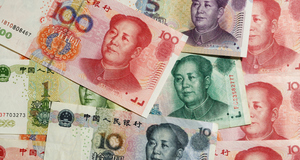Grand Narrative, Fragmented Reality: The Belt and Road Initiative in Heilongjiang Province
By
2021, Vol. 13 No. 09 | pg. 1/1
IN THIS ARTICLE
KEYWORDS
AbstractMost analysts agree that China’s Belt and Road Initiative (BRI) is set to become a defining feature of the global economy of the 21st century. However, there is wide-ranging debate about how to understand the BRI. Is it a top-down “grand strategy” directed by Xi Jinping, or just an umbrella term for a wide range of fragmented individual projects? This paper examines the “Three Bridges One Island” (三桥一岛) initiative in Heilongjiang province to shed light on this question. The findings suggest that official policy narratives about the BRI are indeed dictated by the Chinese central government. However, the concrete planning and implementation of projects is initiated by local actors, actually long before the BRI even existed. The branding as “BRI project” later on may then be interpreted as a way in which local governments pay lip service to higher levels of government. Hence, this paper highlights the need for clearer framing of discussions on centralization in the BRI by distinguishing between centralization of policy initiatives and centralization of decision making processes. In September 2013 Chinese president Xi Jinping unveiled China’s new flagship project for international connectivity in trade, finance, and infrastructure: the Belt and Road Initiative (BRI). As of 2020, the BRI spans more than 3000 projects in around 170 countries (Refinitiv 2020), and is projected to become a defining feature of the global economy in the 21st century. However, since the BRI is not clearly institutionalized, there is considerable academic debate about what the BRI even “is” and how decision making on BRI project works. One strand of research argues that the BRI is a centrally organized, top-down “Grand Strategy” for reshaping the global economy in the vision of Xi Jinping. Another strand maintains that the BRI is just an umbrella term for a fragmented set of projects initiated by multiple different actors. This essay will shed light on this debate by conducting a case study of the “Three Bridges One Island” (三桥一岛) initiative that supposedly promotes connectivity between China’s north-eastern Heilongjiang Province and Russia. I will argue that, while official policy narratives about the BRI are indeed dictated by the Chinese central government, the concrete project planning and implementation is initiated by local actors, actually long before the BRI even existed. Hence, these projects cannot be understood as a part of a “Grand Strategy.” Instead, the branding of these projects as part of the BRI may be interpreted as a way for local governments to pay lip service to higher levels of governance. The essay will proceed as follows: First, I will introduce the academic debate on centralization or fragmentation in the BRI. Next, I will analyze the BRI in Heilongjiang Province in two parts: the first part analyzes the official policy narratives around BRI projects in Heilongjiang, the second part is the main contribution of this essay and disentangles how the projects of the “Three Bridges One Island” initiative were actually planned and implemented over the last few decades. I will conclude with some limitations and broader implications of my findings.The Belt and Road Initiative: Grand Strategy or an Incoherent Set of Projects?A large fraction of scholarship argues that the BRI is a top-down strategy that aims to fundamentally reshape not just the global economic system, but global governance as a whole (Callahan 2016; Rolland 2017, 2019; Zhou and Esteban 2018; Macaes 2019; Tobin 2020). These scholars understand the BRI essentially as a highly centralized geo-political strategy that aims to challenge global US hegemony. They propose three main arguments: Firstly, BRI announcements always come from the very highest level of the Chinese political system, usually from Xi Jinping himself. This reflects its importance to key areas of Chinese interests. Secondly, China faces increasing military “encirclement” by US allies in its Eastern maritime areas. Strengthening ties towards the West with Eurasia through the BRI gives China the opportunity to counter-balance this encirclement in an area where the US is historically rather weak. Lastly, the BRI gives an opportunity for the Chinese state to promote values and norms that align more closely with its own vision for global governance. As such, the BRI can be understood as a concrete policy tool for Xi Jinping to realize some of his ideological visions, such as the “community of shared destiny for mankind.” In stark contrast to this view, a range of other scholars have argued that the BRI is in fact a very incoherent set of individual projects with highly fragmented decision making processes (Ye 2019; Jones and Zeng 2019; Carrai, Defraigne, and Wouters 2020; Jaros and Tan 2020; Hale, Liu, and Urpelainen 2020). This part of the literature points out that the BRI lacks a clear institutional structure. As a consequence, multiple different political and financial institutions are involved in the decision making process at various points. Even though some of those are controlled by the Chinese central government, these central institutions alone lack the capacity to control and monitor the BRI on a project-level. Hence, much decision making power remains at the provincial or even county levels within China, or with institutions in the partner countries. This means that the BRI is not one unified strategy, but rather a playing field for all these different actors to achieve various, sometimes conflicting, goals. The Belt and Road Initiative in Heilongjiang ProvinceIn order to investigate how these conflicting theories about the BRI play out on a more practical level, an analysis on the provincial level within China could be promising. As Jaros and Tan (2020) have demonstrated, the Chinese provinces play a crucial role as gate-keepers between the capital-rich central government and the counties who need capital for infrastructure. At this intermediary level it might be possible to identify whether the “flow” of decision making is rather “top-down” or “bottom-up.” Heilongjiang province is actively integrated into a range of BRI projects due to its long land border with Russia which makes it an interesting case study for this question. Official Policy NarrativeAn analysis of Heilongjiang’s major policy initiatives as part of the BRI suggest that the first school of thought is correct: The provincial level policy plans closely follow what is dictated by central strategies. After the national BRI was started in late 2013, Heilongjiang worked towards its own provincial BRI strategy to “conscientiously implement the major decisions by Xi Jinping and the central government” (State Council Information Office 2014). In December 2014, the Economic Conference of the Heilongjiang Provincial Party Committee announced the “Longjiang Silk Road Belt” (龙江丝路带) (Song 2019b, 16). The initiative was clearly first promoted as BRI at the center in Beijing, and then directly adopted as Longjiang Silk Road Belt by the provincial government. A similar pattern emerged when the “Vision and Actions on Jointly Building Silk Road Economic Belt and 21st-Century Maritime Silk Road” (short: “Visions and Actions”) were announced at the national level in March 2015. The plan outlined different roles for China’s provinces in the implementation of the BRI, and asked for Heilongjiang to improve infrastructural connectivity with Russia (NDRC et al. 2014). In order to fulfill this exact task, Heilongjiang province followed swiftly in 2016 to introduce the “Three Bridges One Island” (三桥一岛)1 project (Song 2019a). It includes the Heihe-Blagoveshchensk Highway Bridge, the Tongjiang-Nizhneleninskoy Railway Bridge, the Dongning-Poltavka Highway Bridge, and the Heixiazi Island Port. When promoting “Three Bridges One Island,” provincial authorities very closely follow Heilongjiang’s assigned tasks from the “Visions and Actions” document. For example, provincial leaders proclaim that the “Three Bridges One Island” Initiative will help Heilongjiang to turn into “China’s important window for opening to the North” (国家向北开放的重要窗口) (Heilongjiang Department of Commerce 2019). The exact same phrase is found in the central “Visions and Actions” as well (NDRC et al. 2014). The national policy initiatives and their respective provincial-level “response” are summarized in Table 1. They suggest that the BRI is indeed rolled out from the center to the provinces in a systematic way. Most existing scholarship on the BRI in Heilongjiang simply accepts this as the whole story, and presents Heilongjiang as a successful example of implementation of national policy (Zhang 2019; Song 2019a, 2019b). Actual Project ImplementationA very different picture emerges when we look at the actual planning process of the “Three Bridges” a bit more closely (due to limited space, I do not analyze the ”One Island”). This section shows three key findings: Firstly, relatively concrete plans for all three bridges existed long before the BRI started. These plans were initiated from all levels of government, from county to central, and both in China and in Russia. Secondly, even actual construction of two of the bridges began before the “Three Bridges One Island” initiative started, and the last bridge still has not entered construction as of early 2021. Thirdly, the two bridges that did successfully enter construction received investment approval from the National Development and Reform Commission (NDRC) before the BRI started. The NDRC is responsible for investment approval in the BRI(Hale, Liu, and Urpelainen 2020, 22), suggesting a degree of continuity in how these projects were implemented before and after the launch of the BRI. This may also explain why the local population in Heilongjiang did not feel any real changes to their economic life as a consequence of the BRI (Shah and Pisharody 2019). Table 2 summarizes the key timeline of all three bridge construction projects. The planning process of the Heihe-Blagoveshchensk Highway Bridge stretches back decades (DBW Heilongjiang Party News 2005). It was first proposed in 1987 by the Heilongjiang provincial government, albeit in relatively vague terms. However already in 1995, a more concrete agreement was signed by Chinese Vice Premier Wu Bangguo and Russian Deputy Prime Minister Dadidov, bringing the plan to a national level. In 2005, the bridge project received approval from the NDRC, making the Heilongjiang party press rejoice that “friendship between Russia and China is just around the corner” (DBW Heilongjiang Party News 2005). Things slowed down a bit in the coming decade, but China and Russia eventually reached an amended agreement on the bridge construction in 2015 (Russia Transport Ministry 2015) and construction started in 2016, just ahead of the announcement of the “Three Bridges One Island” initiative. The history of the Tongjiang-Nizhneleninskoy Railway bridge is remarkably similar, just that construction started even earlier, in 2014 (DBW Heilongjiang Party News 2016b). The Dongning-Poltavka Highway Bridge developed a bit differently. Concrete planning of the bridge started in 2005 at the county level in Dongning (DBW Heilongjiang Party News 2016a). The plan gained recognition in the 2009 national “Cooperation Plan between Northeast China and the Russian Far East” (DBW Heilongjiang Party News 2016b), but ultimately failed to be implemented. This is the only of the three bridges that did not get NDRC approval before the BRI, and, interestingly enough, still did not get approval since it became a BRI project. Even in early 2021 the Heilongjiang provincial authorities are only proposing to “promote the signing of formal documents on the construction of the Dongning Boundary River Bridge” (Heilongjiang Department of Transportation 2021), showing essentially no progress since the announcement of the “Three Bridges One Island” in 2016, when “domestic procedures of the Bridge Construction Agreement” were supposedly “almost completed” (DBW Heilongjiang Party News 2016b). Overall, concrete planning precedes the BRI by many years for all three bridges. Investment approval and construction either also started before BRI-related policy initiatives (as in Heihe and Tongjiang), or have still not happened (as in Dongning). Looking at this chronology, it seems absurd to describe these projects as an “implementation” of the “Three Bridges One Island,” ”Longjiang Silk Road Belt,” “Visions and Actions,” or the “Belt and Road.” Rather, all of these projects have a history of complex and long decision making and negotiation processes, involving various actors as local, provincial, and national level in both Russia and China. After the start of the BRI they were then labeled as “Three Bridges One Island,” probably as a way to pay lip service to higher levels of government. My analysis has three important limitations. Firstly, it was not possible to access exact numbers as for when the state invested how much in these projects. This means it is at least plausible that political and also financial capital availability for the bridges increased due to the BRI, which would appear to give more weight to the initiative than this analysis suggested. Secondly, the analysis is very narrow in scope, making it unclear to which extent the findings would generalize to other projects or provinces. Furthermore, my investigation clearly focused on the Chinese side of the decision making process, only scratching the surface of how these processes unfolded in Russia. Expanding the scope could be a promising avenue for further research. ConclusionThis case study of Heilongjiang province showed that the BRI in a way is actually highly centralized and fragmented. In terms of official narrative it is top-down, in terms of implementation it is bottom-up and much more chaotic. Looking at the policy campaigns surrounding the BRI, one can indeed see how the BRI is planned in the center in Beijing and then adopted and implemented by lower levels of government. However, this understanding of the BRI is incomplete at best or superficial and wrong at worst. A closer look at the history of the concrete projects revealed quite a different story. None of the investigated projects were actually newly established as part of the BRI. Instead, all projects already had a long and complicated planning history when the “Three Bridges One Island” initiative was rolled out. For two of the bridges, construction had even already started. These findings should make us somewhat skeptical of the scholarship that describes the BRI as a coherent, top-down “Grand Strategy” that is designed at the center in Beijing. Nevertheless, this view may be correct in terms of the official BRI narrative and ideology. Hence, discussion on whether or not the BRI is centralized need to be more specific: which aspect of the BRI are we talking about? The official policy discourse or the concrete planning and implementation of individual projects? Since the scope of this essay was very narrow, there would be great value in further research that tests this hypothesis for a larger range of cases. ReferencesCallahan, William A. 2016. “China’s “Asia Dream” the Belt Road Initiative and the New Regional Order.” Asian Journal of Comparative Politics 1 (3): 226–243. Carrai, Maria Adele, Jean-Christophe Defraigne, and Jan Wouters. 2020. “The Belt and Road Initiative and Global Governance: By Way of Introduction.” In The Belt and Road Initiative and Global Governance, 1–21. Cheltenham: Edward Elgar Publishing. ChinaDaily. 2007. “China-Russia Trade to Top USD 40b” (June 18, 2007). Accessed May 5, 2021. http://www.china.org.cn/english/BAT/214252.htm. DBW Heilongjiang Party News. 2005. “黑河人的黑龙江大桥之梦 头区先期破土 工” (Hēihé rén de hēilóngjiāng dàqiáo zhī mèng tóu qū xiānqí pòtǔ gōng) [Heihe People’s Dream of Heilongjiang Bridge - Bridge Head Area Early Groundbreaking]. (September 25, 2005). Accessed May 5, 2021. https://heilongjiang.dbw.cn/system/2005/09/25/050142242.shtml. ________ 2008. “国家批准同江中俄跨江铁路大桥项目 (Guójiā pīzhǔn tóng jiāng zhōng é kuà jiāng tiělù dàqiáo xiàngmù) [State approves the Tongjiang China-Russia Railway Bridge Project]” (April 2, 2008). Accessed May 5, 2021. https://heilongjiang.dbw.cn/system/2008/04/02/051199187.shtml. ________ 2016a. “东宁口岸新桥将成为龙江丝路带上的重要枢纽” (Dōng níng kǒu'àn xīn qiáo jiāng chéngwéi lóng jiāng sī lù dài shàng de zhòngyào shūniǔ) [The new bridge at Dongning Port will become an important hub on the Longjiang Silk Road Belt]. (December 28, 2016). Accessed May 5, 2021. https://heilongjiang.dbw.cn/system/2016/12/28/057492582.shtml. ________ 2016b. “黑龙江省大通道建设构筑对外开放大平台” (Hēilóngjiāng shěng dà tōngdào jiànshè gòuzhù duìwài kāifàng dàpíngtái) [The construction of large passages in Heilongjiang Province builds a large platform for opening to the outside world]. (December 28, 2016). Accessed May 5, 2021. https://heilongjiang.dbw.cn/system/2016/12/28/057492014.shtml. Hale, Thomas, Chuyu Liu, and Johannes Urpelainen. 2020. “Belt And Road Decision-Making In China and Recipient Countries: How and To What Extent Does Sustainability Matter?” ISEP, BSG, and Climate Works Foundation, 1–99. Heilongjiang Department of Commerce. 2019. “中俄合建首座跨境公路大桥今日合龙” (Zhōng é hé jiàn shǒuzuò kuà jìng gōnglù dàqiáo jīnrì hélóng) [First Sino-Russian Cross-Border Highway Bridge Completed Today]. (May 31, 2019). Accessed May 5, 2021. http://sswt.hlj.gov.cn/index/show.html?id=4559&classid=14. Heilongjiang Department of Transportation. 2021. “大力推进交通基础设施建 确保交通运 “十四五”开好局起好步” (Dàlì tuījìn jiāotōng jīchǔ shèshī jiàn quèbǎo jiāotōng yùn “shísìwǔ” kāi hǎo jú qǐ hǎo bù) [Vigorously promote the construction of transportation infrastructure to ensure a good start in the ”14th Five-Year Plan” for transportation]. (March 20, 2021). Accessed May 5, 2021. http://www.hljjt.gov.cn/xw/jtxx/stxx/2021/03/11775.html. Jaros, Kyle A, and Yeling Tan. 2020. “Provincial Power in a Centralizing China: The Politics of Domestic and International “Development Space.”” The China Journal 83 (1): 79–104. Jones, Lee, and Jinghan Zeng. 2019. “Understanding China’s ‘Belt and Road Initiative’: Beyond ‘Grand Strategy’ to a State Transformation Analysis.” Third World Quarterly 40 (8): 1415–1439. Macaes, Bruno. 2019. Belt and Road: A Chinese World Order. Oxford: Oxford University Press. NDRC, Ministry of Foreign Affairs, Ministry of Commerce of the People’s Republic of China, and State Coundil. 2014. “Vision and Actions on Jointly Building Silk Road Economic Belt and 21st-Century Maritime Silk Road” (November 6, 2014). Accessed May 5, 2021. https://en.ndrc.gov.cn/newsrelease8232/201503/t201503301193900.html. Refinitiv. 2020. BRI Connect: An Initiative in Numbers (5th Edition). Accessed May 5, 2021. https://www.refinitiv.com/content/dam/marketing/enus/documents/reports/belt-and-road-initiative-in-numbers-issue-5.pdf. Rolland, Nadege`. 2017. “China’s “Belt and Road Initiative”: Underwhelming or Game-Changer?” The Washington Quarterly 40 (1): 127–142. ________ 2019. “A China-Russia Condominium over Eurasia.” Survival 61 (1): 7–22. Russia Transport Ministry. 2015. “Signing a Protocol on amending the Russian-Chinese Intergovernmental agreement on the joint construction of a cross-border bridge over the Amur River” (August 29, 2015). Accessed May 5, 2021. http://government.ru/en/docs/19540/. Shah, Ankur, and Vivek Pisharody. 2019. “BRI Draws Skepticism in China’s Northeast.” Reconnecting Asia CSIS, accessed May 5, 2021. https://reconnectingasia.csis.org/analysis/entries/bri-draws-skepticism-china-northeast/. Song, Linlin. 2019a. “Heilongjiang Province’s Engagement in BRI.” Review of Business and Economics Studies, no. 2, 6–21. ________ 2019b. “Strategic Priorities of Cooperation between Heilongjiang Province and Russia.” R-Economy 5 (1): 13–18. State Council Information Office. 2014. “黑龙江:倾力构建东部陆海丝绸之路经济带” (Hēilóngjiāng: Qīng lì gòujiàn dōngbù lù hǎi sīchóu zhī lù jīngjì dài) [Heilongjiang: Efforts to Build the Eastern Land and Sea Silk Road Economic Belt]. (November 6, 2014). Accessed May 5, 2021. http://www.scio.gov.cn/ztk/wh/slxy/31208/Document/1386197/1386197.htm. TASS. 2014. “Russia and China establish company to build a bridge across Amur River” (September 26, 2014). Accessed May 5, 2021. https://tass.com/economy/751373. Tobin, Daniel. 2020. “How Xi Jinping’s” New Era” Should Have Ended US Debate on Beijing’s Ambitions.” Center for Strategic and International Studies (CSIS). Ye, Min. 2019. “Fragmentation and Mobilization: Domestic Politics of the Belt and Road in China.” Journal of Contemporary China 28 (119): 696–711. Zhang, Xiujie. 2019. “Facilities Connectivity in Eastern Regions of China and Russia and the “Belt and Road” Initiative.” R-Economy 5 (3): 144–150. Zhou, Weifeng, and Mario Esteban. 2018. “Beyond Balancing: China’s Approach Towards the Belt and Road Initiative.” Journal of Contemporary China 27 (112): 487–501. Endnotes1.) In Chinese, the name 三桥一岛 (Three Bridges One Island) follows clearly the same structure as 一带一路 (the Chinese name of the BRI, literally “One Belt, One Road”). Hence, even the name of the initiative can be interpreted as a way to “follow the center.” The English name ”Belt and Road Initiative” unfortunately hides this implicit reference. Suggested Reading from Inquiries Journal
Inquiries Journal provides undergraduate and graduate students around the world a platform for the wide dissemination of academic work over a range of core disciplines. Representing the work of students from hundreds of institutions around the globe, Inquiries Journal's large database of academic articles is completely free. Learn more | Blog | Submit Latest in Political Science |




















